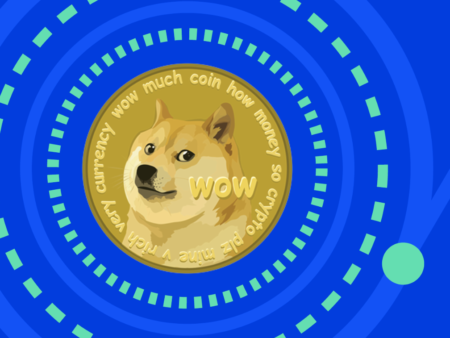Since bitcoin came into existence, thousands of cryptocurrencies have been created, although not all of them enjoy a community that values them for their usefulness.
It is said that, as of February of this year, there were more than 20,000 cryptocurrencies in the world and although it is likely that today that number has decreased or increased, it will probably never be known exactly how many there are. This is because anyone can create a new cryptoasset on an existing blockchain without too much difficulty, technical expertise or investment.
Key facts:
- Bitcoin, the only truly decentralized cryptocurrency, represents the evolution of money.
- Ethereum was born in 2014 and two years later there were more than 600 cryptocurrencies in the ecosystem.
- Cryptocurrencies are valued for their properties and the services they allow access to.
- Many cryptoassets are not truly useful, so they have been left for deception.
As they are so easy to create, new cryptocurrency projects are born every day, which requires finding out how useful they are, because depending on this, they are more or less valued by users.
Launching a new cryptocurrency can be as easy as going to a website like Wallet Builders and following the step-by-step to create one more proposal in the ecosystem. However, maintaining, and cultivating over time, a project of your own is often much more challenging.
Projects that have a higher volume of users or are more widely used usually have a development team and a proposition that adds utility. These cryptocurrencies, considered more valuable, lead the lists of sites that rank them by market capitalization.
In the financial world, market capitalization is a benchmark used by investors to assess how big a company is. The parallel is made with cryptocurrencies because the units would represent shares in the network.
Many factors can influence when determining which is the best investment, but what is certain is that market capitalization is an indicator that is used as a reference to determine how risky an investment can be.
So, according to common thinking, the higher the market capitalization of a company, the more stable it is to invest in it.
Even if bitcoin is not a company, it is considered as such, as it has surpassed major companies such as Facebook and Tesla.
As shown by the ycharts site, at the time of writing, bitcoin’s market capitalization is in the order of USD 370 billion. And although the figure is 58.99% lower than a year ago, it is still enough to lead the cryptocurrency market.
The market capitalization of bitcoin is on the order of $370 billion, thus remaining at the top of the ecosystem rankings. Source: ycharts.
1. The first and, for many, the most valuable cryptocurrency is Bitcoin.
CoinGecko data points out that the global market capitalization of cryptocurrencies currently (October 2022) is on the order of USD 1 billion, where bitcoin retains a 38.56% dominance. Meanwhile, Ethereum remains in second place with a 16.28% share.
For their part, stable cryptocurrencies or stablecoins whose market capitalization, as a whole, is in the order of USD 149 billion, have a 14.82% share in the cryptocurrency industry. Tether (USDT) and USD Coin share prominence in this part of the scene.
Bitcoin is not only the most important cryptocurrency in the ecosystem, as ranked by market capitalization, but also enjoys popularity for being the first cryptoasset that existed in the world.
Moreover, bitcoin is considered a valuable proposition for a growing community of users who see it as the evolution of money.
In that sense, the pioneering cryptocurrency is not only used as an effective and secure payment system, but also as a safe haven of value. The latter, given its evolution as digital gold, taking into account that it is a scarce asset, whose software will only issue 21 million units in its entire history.
Likewise, it is necessary to point out that bitcoin is the only truly decentralized cryptocurrency in the ecosystem. So once all these points are added up, we can consider, although some may disagree, that Satoshi Nakamoto’s creation possesses special characteristics that make it a unique asset.
Therefore, we will leave bitcoin in a category of its own in the world of cryptocurrencies. It has existed since its creator published the white paper that the world has come to know under the name “Bitcoin: a peer-to-peer electronic cash system”.
On January 8, 2009, the Bitcoin code was made public and later, on January 12 of the same year, the first transaction was made when Nakamoto sent 10 BTC to his collaborator Hal Finney. Two years later, the emergence of alternative cryptocurrencies known as altcoins began.
Bitcoin is freedom and sovereignty
Bitcoin is a cryptocurrency that offers users the opportunity to lead a different kind of revolution and inspire the separation of state and money to create a new society that is not dependent on any ruler.
Meanwhile, in the world tied to fiat money, that is, the one issued on command, its rulers with their economic policies based on infinite issuance, will probably never have free citizens.
2. Altcoins: genetically edited cryptocurrencies for different uses
Today, more than a decade after the birth of the first altcoin, we have that among the top 10 alternative cryptocurrencies by market capitalization are Ethereum (ETH), Binance Coin (BNB) and Ripple (XRP) in first place.
Then there are Cardano (ADA), Solana (SOL), Dogecoin (DOGE), Polkadot (DOT), Polygon (MATIC), Shiba Inu (SHIB) and Tron (TRX). Of course, with the exception of Bitcoin, the list has changed and the positions of these cryptocurrencies have been modified over time, depending on what users and investors believe.
But beyond classifying cryptocurrencies by their market capitalization, they can also be categorized according to their utility. Ether, for example, the native cryptocurrency of the Ethereum network, has multiple use cases.
For example, on platforms such as Compound or Aave, users can deposit their ETH, to earn returns or apply for loans.
Another example is in the Decentraland metaverse, a decentralized application (DApp) based on the Ethereum network where users can buy virtual lands or non-fungible tokens (NFT). To do so, they use the native cryptocurrency of their ecosystem, which is called MANA.
Similarly, there are other virtual worlds that use their own cryptocurrencies to trade with each other, obtain rewards or experience various experiences.
There are also cryptocurrencies that are valued by a community that prioritizes user privacy, such as Monero (XMR), Zcash (ZEC).
There are also stablecoins, which are tokens issued on the blockchain or accounting of a network such as Bitcoin or Ethereum, whose value is linked to an external asset, such as national currencies or precious minerals.
These stable cryptocurrencies are assets that function as digital representations of the dollar, the euro and even gold. In other words, they are collateralized products that can be bought or sold within the cryptocurrency market.
Stablecoins were born as a solution to the intrinsic volatility of native cryptocurrencies, and as we mentioned before, among them are Tether and USD Coin, as well as Binance USD (BUSD) and DAI (DAI).
Bitcoin and altcoins, how to differentiate them?
One of the main characteristics that distinguishes bitcoin from altcoins is that while the pioneer cryptocurrency is scarce because only 21 million units will exist, alternative cryptoassets are a replica of national currencies issued by states.
They all have a kind of unlimited “printing” machine and depend on the decisions of a founding team that is not governed by any value preservation rules.
3. In the world of cryptocurrencies there are also shitcoins.
Further down the ranking by market capitalization is a long list of cryptoassets that the community usually refers to as “shitcoins”.
In the CryptoNews glossary of terms, we find that the term “shitcoin” literally translates to “shit coin”. It is a derogatory word to refer to an altcoin or alternative cryptocurrency that does not seem to have much of a future due to a weak proposal, disorganization or poorly done code.
To identify this type of projects we can highlight four of their characteristics: they generally have extremely low liquidity, have no useful technological value, do not enjoy a good reputation and have generally lost more than 70% of their value since their creation.
It may not be so difficult to determine what happened in the world of cryptocurrencies, whether altcoins or shitcoins came first, but what is clear is that new cryptocurrency projects are being born every day, which requires finding out how useful they are.
To shed light on this, the website “Do I have a Shitcoin?” offers appreciations on cryptocurrencies, from the most popular to the very little known. “Try randomly with the cryptoasset of your choice, but don’t be surprised if the language used is sometimes very straightforward,” recommends the CryptoNews article discussing the topic.
Some well-dressed projects hide lies
Many cryptocurrencies exist to be promoted by groups of people who make false promises of high returns, just with the idea of getting money and running away before people discover that the hype doesn’t match the substance. They are promising something to get money now for a return that will never come.
4. So how many cryptocurrencies exist today?
Data on many of these cryptocurrencies is available on sites such as CoinGecko and CoinMarketCap, which track the prices of these cryptoassets, their trading volume and market capitalization on an ongoing, real-time basis.
On CoinGecko, for example, there are more than 12,000 cryptocurrencies and tokens listed, while CoinMarketCap has a record of more than 20,000 cryptoassets.
However, none of these data aggregators give any guarantee on the information linked by each project, meaning that the fact that they are listed does not make a cryptocurrency a reliable asset.
Among these listed projects is the SQUID token, inspired by the hit Netflix series the Squid Game, which reached USD 2,856 shortly after its launch in October last year. As reported by CryptoNews, at the time, the price of the token then dropped 99.99% on November 1, along with the disappearance of its developers.
These events are common in the ecosystem and are due to the fact that many of these projects are often used to apply Pump and Dump schemes. This consists of inflating the price of a given asset through concerted purchases and promotion techniques among small groups of investors (pump).
Once the value of the asset is on the rise, the fraudsters sell everything they had previously bought (dump). They offer their coins precisely to those who will later end up losing out, which will allow them to make significant profits. Later, the massive sale of the asset will cause its price to plummet.



